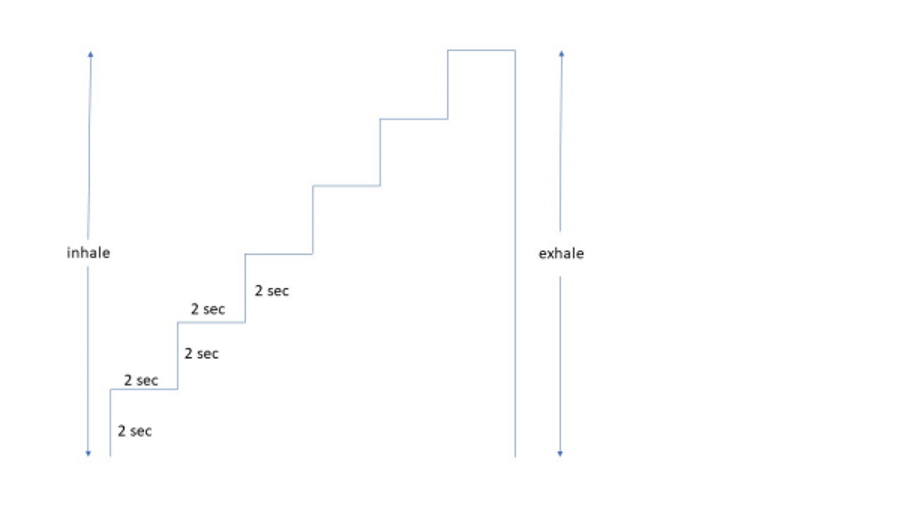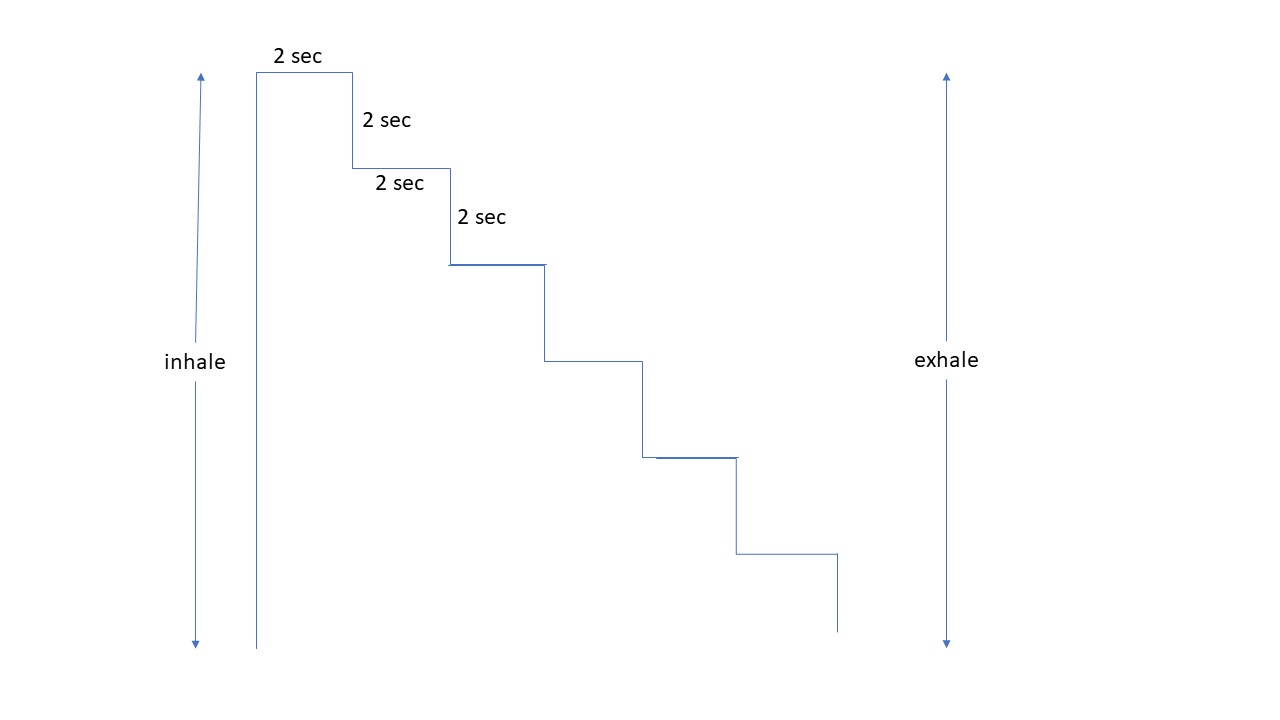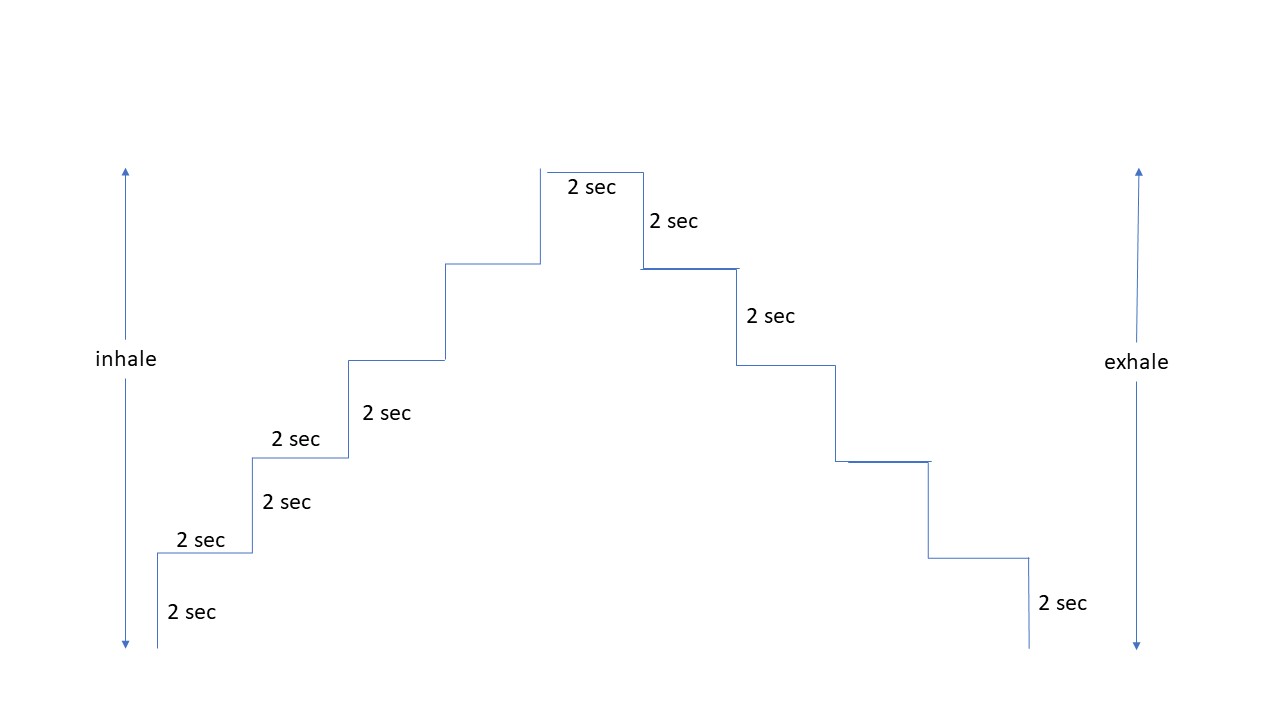In previous articles, I have talked about the concept of the four components of a breathing cycle – inhalation (pūraka), exhalation (rechaka), retention (called kumbhaka) after inhalation (antara-kumbhaka), and retention after exhalation (bāhya kumbhaka). In addition to these, breath retention can be introduced at any time during the process of inhalation or exhalation. One of the prāṇāyāma practices that involves such a breathing technique is called “viloma prāṇāyāma” or “staircase breathing” in English. In the viloma prāṇāyāma we interrupt the breathing cycle in steps of two seconds for a duration of two seconds each. For example, during inhalation we begin by inhaling for two seconds, then hold the breath for two seconds, again inhale for two seconds and continue in this manner until we reach the end of inhalation. Similarly, during exhalation we create these two second steps. Because of this step-wise progression of breathing, this technique is commonly translated as the “staircase breathing” in English.
I hope you will enjoy practicing with me using the video presentation.
The technique

inhale staircase, exhale elevator
In the first three rounds of breathing, we’ll use the staircase breathing during inhalation. However, during exhalation, instead of the staircase, we’ll use the “elevator” or deep, long, continuous breath while “coming down”. During the next three rounds, we’ll use the elevator breathing (long, deep continuous breath) during inhalation and the staircase technique during exhalation. For the subsequent 4 to 5 rounds, we’ll use the staircase breathing during both inhalation and exhalation.

inhale elevator, exhale staircase
In order to maintain the proper duration of each step during inhalation, exhalation and breath retention, we can keep a count in the mind by mentally repeating “om one, om two”, “om one, om two” etc., for the duration of each breath.
Step-by-step
- Sit in any comfortable cross-legged sitting posture with the spine upright, arms and shoulders relaxed.
- Start with simple deep, ujjayi breathing, without any retention. Take three to four deep breaths.
- For the next 3 deep breaths, interrupt the inhalation every two seconds for a duration of two seconds. Make sure there is no strain while breathing. At the end of inhalation, the lungs should be filled to capacity.
- Exhale with a natural deep, ujjayi breath with no interruption.
- For the next 3 breaths, do the reverse – take a natural deep inhalation (no interruptions) using the ujjayi breath, followed by deep exhalation which is interrupted every two seconds for two seconds.

inhale staircase, exhale staircase
- Now you can introduce interruption of breath, every two seconds for a duration of two seconds, both during inhalation and exhalation.
- At the end of interrupted inhalation, try to hold the breath for five to ten seconds. The duration of retention should be such that the quality and depth of the following exhalation is not impacted. If you are able to hold the breath for more than five seconds, you may apply Jalandhara Bandha (chin lock) during retention.
- Continue the interrupted breathing cycles for about five to seven breaths.
- End the practice with relaxed, regular breathing pattern.
Benefits
The Viloma pranayama involves total concentration on the breathing pattern in order to maintain the appropriate durations of breath and retention. As such, this technique helps us stay in the present moment, not letting the mind drift away. As a result, the practice is a helpful technique as preparation for meditation. It can be used effectively as a form of dhāraṇā (concentration) practice before transitioning to your deep meditation (mantra meditation, for example).
Recent Comments